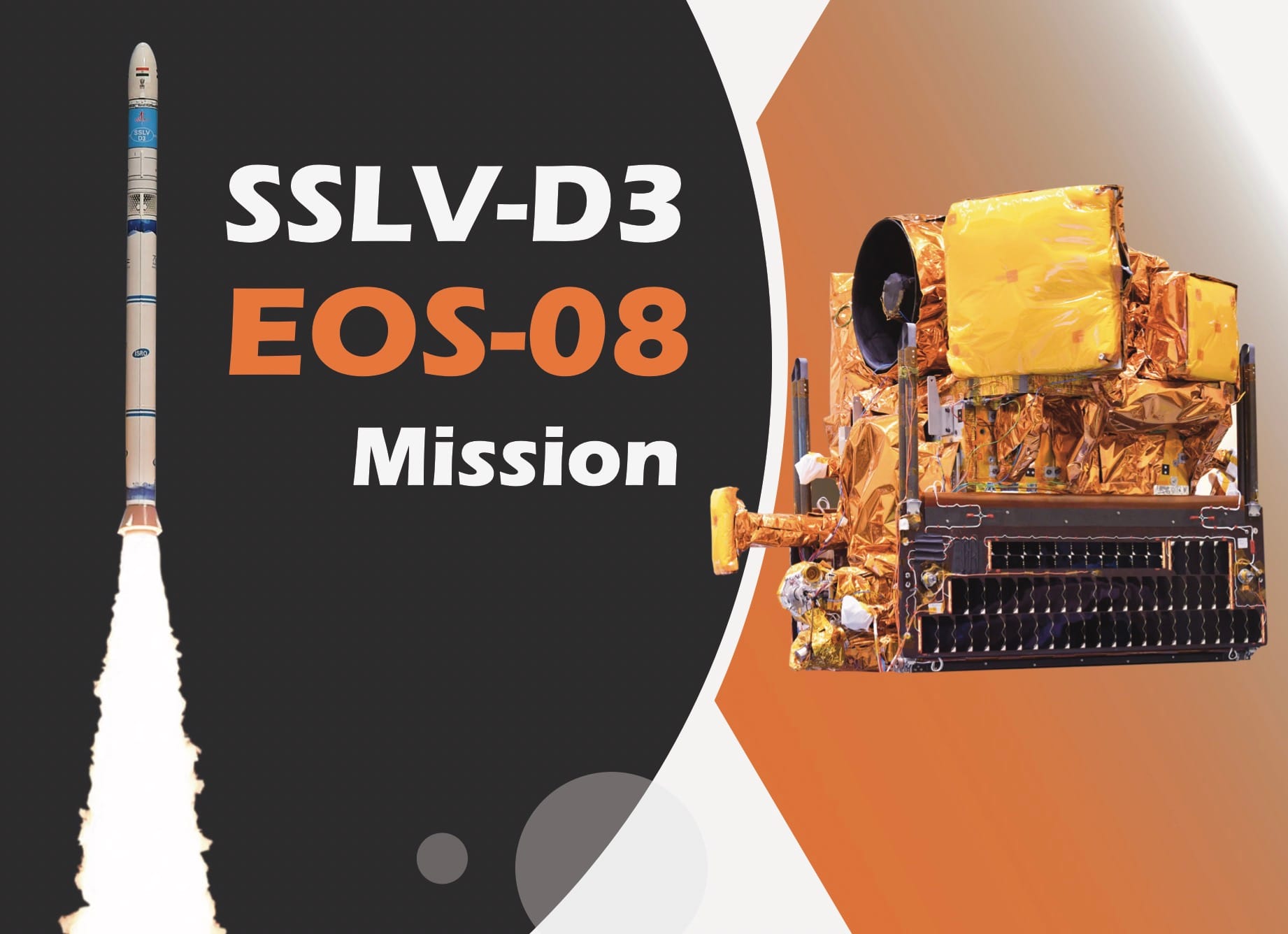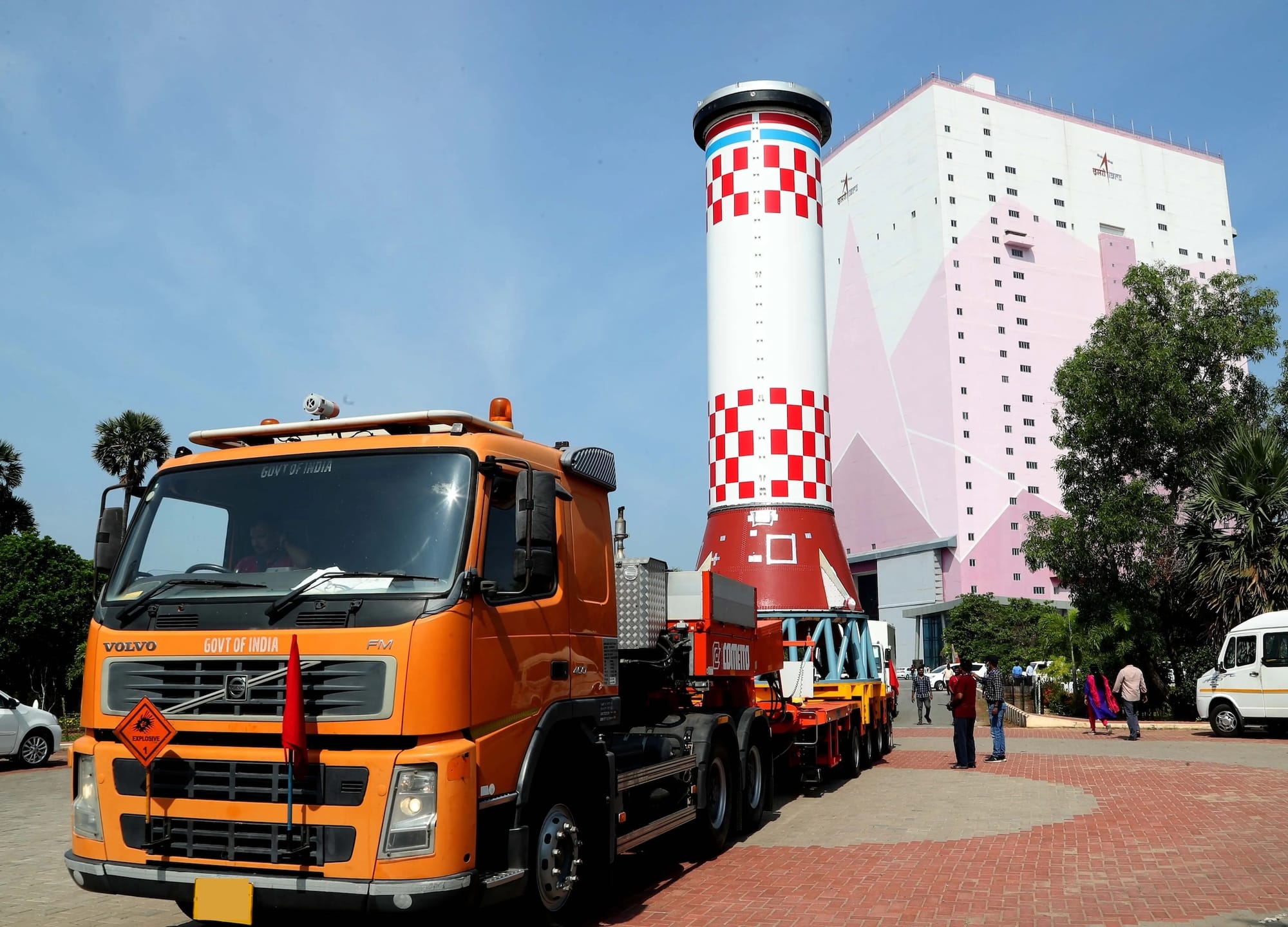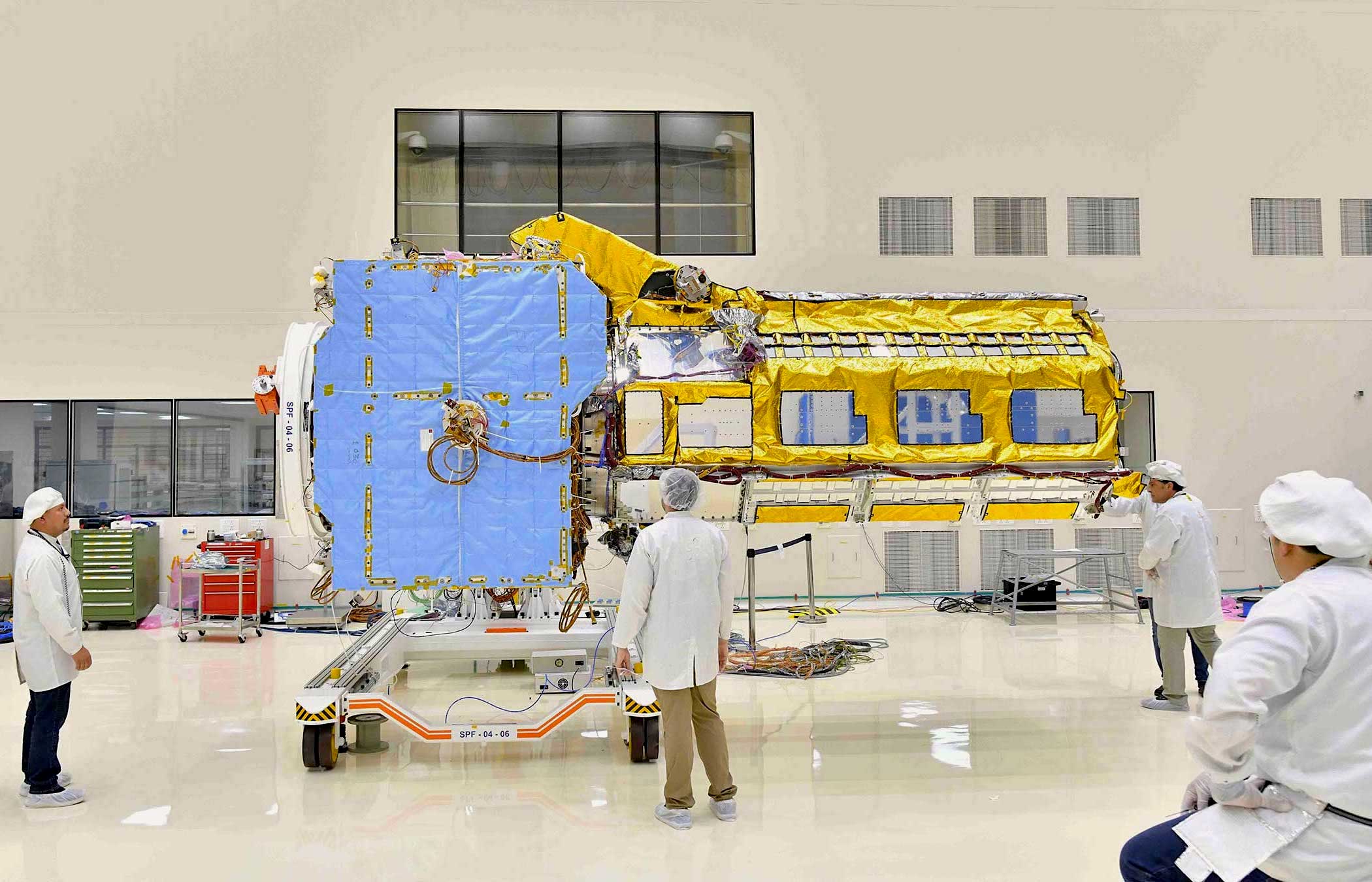Indian Space Progress #19: On the new rocket in town, and many mission updates
A nimble new launch(er)

On August 16, ISRO launched its smallest and newest rocket SSLV, which successfully placed the agency’s 175-kilogram EOS-08 Earth observation satellite into its intended 475-kilometer circular orbit. The satellite carries a number of novel technological components as well as an innovative remote sensing method to study soil, surfaces, and water bodies based on reflected GPS & GNSS navigation signals. The SSLV also carried Chennai-based startup Space Rickshaw’s 540-gram Deployer X, the world’s lightest satellite deployer which is now proven to work in space since it successfully deployed the startup-designed demonstration nano-satellite.
Now that the SSLV has demonstrated two consecutive successful orbital launches, ISRO now considers the rocket to be operational. With a purported sticker price of around $4 million and a fast, modular 4-day assembly, India intends to start commercially flying the SSLV for payloads up to 500 kilograms, putting it squarely against Rocket Lab’s Electron and the Firefly Alpha in terms of mass class.
However, said US launchers have progressed faster between the SSLV’s previous flight in February 2023 and now. Electron has flown many times, including with repeat customers, and Firefly has had two successful launches while also bagging multi-launch agreements for tens of flights with L3Harris and Lockheed Martin respectively. Of course, SpaceX’s Falcon 9 Transporter flights are eating into lunches of other rockets anyway—despite its price hike last year—but the Falcon 9’s exceptionally high demand means the 2-year average wait time to fly cheap will certainly not work for enough customers, leaving some room for other launchers.

In any case, the launch vehicles that should worry the most about SSLV’s existence are from India’s own aspiring private launch companies such as Skyroot and Agnikul, who might find themselves strapped for customers against ISRO itself. And, regardless of the SSLV’s global commercial competitiveness, ISRO will keep improving the rocket for the country’s own civil and strategic needs—just as the other ISRO launch vehicles exist to ensure independent access to space for India. This will end up creating potential commercial benefits too anyway.
The SSLV is set to be productionized via an impending industry handover, with a notional target of as many as ten yearly launches by 2026. Realistically though, this goal might be a couple of years out but will be good to achieve either way. In parallel, ISRO has begun making a dedicated 8 square-kilometer spaceport at Kulasekarapattinam in Tamil Nadu. While Sriharikota will remain India’s primary spaceport, the new port will be dedicated for launching SSLV rockets and small-lift private launchers starting 2026. The new spaceport will enhance the performance of the SSLV for sun-synchronous polar orbits because then it won’t need to follow a less fuel efficient curved path in order to avoid flying over Sri Lanka.
Gaganyaan updates

- ISRO announced on August 2 that it has selected Group Captains Shubhanshu Shukla and Prasanth Balakrishnan Nair as two of the four Gaganyaan Indian astronaut candidates to undergo advanced training at NASA’s Johnson Space Center. After the training, Shubhanshu Shukla will fly to the International Space Station (ISS) early 2025 via the NASA-enabled Ax-4 Axiom Space private mission aboard a SpaceX Crew Dragon capsule as the Mission Pilot, with Prasanth Nair being his backup. NASA’s international ISS partners will need to approve for the Ax-4 crew to fly.
- The ISS mission will provide ISRO with experience to feed into India’s ambition to indigenously send humans to Earth orbit. The next major milestone towards that end is Gaganyaan G1, the first of three uncrewed test flights of the Gaganyaan spacecraft before ISRO deems it safe enough to launch astronauts. We learn from responses to queries in the Lok Sabha—the Indian equivalent to the US House of Representatives—and from updates in ISRO’s July monthly summary that the agency has realized several critical ground facilities for Gaganyaan, including independent spacecraft training and mockup simulators for preparing astronauts pre-flight and apparently facilities to test the Gaganyaan crew module’s environmental oxygen control systems too. Ground stations needed during Gaganyaan missions are nearing completion as well. For Gaganyaan G1, ISRO has readied the human-rated LVM3 rocket’s core liquid stage and twin solid boosters for integration, and is nearing full assembly of the mission’s crew and service modules as well.
Many thanks to the Takshashila Institution, KaleidEO, PierSight, Gurbir Singh and Nitish for sponsoring this month’s Indian Space Progress report. If you too love my work of trying to capture true trajectories of Indian space, join them and support independent writing and journalism!
Dive into the latest on Chandrayaan Moon missions

- Dive deeper: On the importance of the Chandrayaan 3 rover and its contribution to learning about our Moon’s origin
- Blog post: On (not) celebrating Chandrayaan 3’s Moon landing, or that of Apollo
- Video: India’s increasingly complex upcoming Chandrayaan Moon missions (Article on which it’s based: https://jatan.space/moon-monday-issue-183/)
More Chandrayaan updates
- ISRO has finally made available an initial set of peer-reviewed Chandrayaan 3 lander and rover payload data online, which is accessible by anyone after free registration. ISRO’s data portal, called Pradan ISSDC, is compliant with NASA’s Planetary Data System (PDS). And so just as with the Chandrayaan 2 orbiter, Chandrayaan 3 data is available in the latest PDS4 format for international researchers to easily utilize it.
- ISRO’s not-yet-commissioned Chandrayaan 4 lunar sample return mission now has a more refined architecture, with the current aim being to bring 3 to 5 kilograms of samples, which has increased the mass of the five-module spacecraft stack by about 30% to nearly 10,000 kilograms. That’s roughly twice the maxed out GTO payload capacity of India’s most powerful rocket, the Launch Vehicle Mark III (LVM3). Since LVM3 has less than half the capacity of China’s Long March 5 rocket which enabled CNSA to undertake the Chang’e 5 and Chang’e 6 sample return missions, ISRO’s approach with Chandrayaan 4 instead involves two rocket launches from Earth. ISRO will soon submit a funding proposal to the Indian government for commissioning Chandrayaan 4.
- ISRO continues to work alongside NASA and KARI to avoid potential collisions between the active (near-)polar lunar orbiters from the three space agencies. From ISRO’s July monthly summary report:
Extensive coordination was carried out to resolve the 12th July, 2024 close approaches between Chandrayaan 2 Orbiter (CH2O) and Lunar Reconnaissance Orbiter (LRO) of NASA, including an online meet on 9th July 2024. Based on SSOM’s request, NASA team made special arrangements to quickly provide the orbital ephemeris after LRO momentum unload manoeuvre on 10th July, 2024 which helped to rule out any CAM requirement for CH2O. Necessary screening was done through BEARCAT (Beyond Earth Collision Avoidance Tool) for OM-85 scheduled on 23rd July, 2024 for CH2O, it resolved the potential close conjunction risks with Korea Pathfinder Lunar Orbiter (KPLO) on 25th July, 2024.
More mission updates

- The launch of the $1.5+ billion, high-profile NASA-ISRO Synthetic Aperture Radar (NISAR) Earth observation satellite has been delayed to H1 2025 because the L-band SAR antenna from NASA JPL needs additional thermal coating to protect it against higher than expected temperatures. Post-launch, NISAR will observe nearly our entire planet every 12 days to reveal ongoing changes in Earth’s crust, polar ice, climatic processes, biomass, agricultural regions, and more. The satellite will also be used for disaster management, whereby its data will be available within a few hours after observations. NASA has a good overview of how NISAR’s advanced radar system will specifically help scientists better monitor deforestation and wetland flooding.
- ISRO Chief S. Somanath has said that ISRO is re-evaluating the Shukrayaan Venus orbiter mission, which essentially puts it on the back-burner. Amid a tight budget, ISRO has been prioritizing Gaganyaan and Chandrayaan missions to the point where the Shukrayaan project has been unable to secure a launch vehicle for even formalizing the final mission proposal, another sign that ISRO’s planetary science program does not have an overarching theme like NASA, ESA, and CNSA do. From an infrastructure standpoint, a way out of this can be if ISRO successfully increases the production rate and payload capacity of its most powerful rocket LVM3 within the next several years. A steady flow of LVM3s could finally allow the agency to equitably serve not just its human spaceflight and commercial launch ambitions but its planetary missions too, which have otherwise been deprioritized even with Chandrayaan 3.
Private space updates
- Bangalore-based startup GalaxEye raised $6.5 million towards developing and launching their first Earth observation & reconnaissance satellite, which will tout multi-sensor capabilities: specifically simultaneously optical and radar imaging, which the company has been testing with drone flights this year.
- Bangalore-based EtherealX has raised $5 million in seed funding with rather bold claims about building a fully reusable medium-lift launch vehicle that can “comfortably capture 30-40%” of the commercial launch market. Needless to say, take the claim with ample grains of salt.
- Sponsored job listings: PierSight is hiring a Senior FPGA Engineer, an Embedded Hardware Engineer, and a RF High Power Amplifier Designer to join the team in building a constellation of SAR and AIS satellites to provide persistent monitoring of all human and industrial activities at sea.
